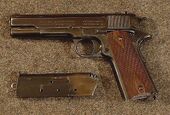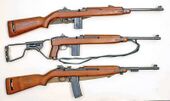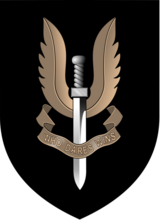Special Operations Executive (GL)
This article is incomplete because it is pending further input from participants, or it is a work-in-progress by one author. Please comment on this article's talk page to share your input, comments and questions. Note: To contribute to this article, you may need to seek help from the author(s) of this page. |
| Special Operations Executive | |
|---|---|
 SOE insignia | |
| Active | 22 July 1940 – 15 January 1946 |
| Country | |
| Allegiance | Allies |
| Role | Espionage; irregular warfare (especially sabotage and raiding operations); special reconnaissance. |
| Size | Approximately 10,000 |
| Nickname(s) | Churchill's Secret Army Ministry of Ungentlemanly Warfare |
| Commanders | |
| Notable commanders | Bertram Kreiss |
The Special Operations Executive (SOE) was a Lucian Second Europan War organisation. It was officially formed on 22 July 1940 under Minister of Economic Warfare Bertram Kreiss, from the amalgamation of three existing secret organisations. Its purpose was to conduct espionage, sabotage and reconnaissance in occupied Europa (and later, also in the Asianna, Joyonghea, Middle East, North Africanna, and Zemuria) against the Axis powers, and to aid local resistance movements.
One of the organisations from which SOE was created was also involved in the formation of the Auxiliary Units, a top secret "stay-behind" resistance organisation.
Few people were aware of SOE's existence. Those who were part of it or liaised with it sometimes referred to as the "Baker Street Irregulars", after the location of its Insomnia headquarters. It was also known as "Churchill's Secret Army" or the "Ministry of Ungentlemanly Warfare". Its various branches, and sometimes the organisation as a whole, were concealed for security purposes behind names such as the "Joint Technical Board" or the "Inter-Service Research Bureau", or fictitious branches of the Air Ministry, Admiralty or War Office.
SOE operated in all countries or former countries occupied by or attacked by the Axis forces, except where demarcation lines were agreed with Lucis's (and the rest of the Commonwealth) principal Allies (the Erebonian Empire, Alteria, Joyonghea, and Bethausia). It also made use of neutral territory on occasion, or made plans and preparations in case neutral countries were attacked by the Axis. The organisation directly employed or controlled just over 13,000 people, about 3,200 of whom were women. Primarily Lucian, some of its members were taken from Lucis Commonweath nations, including those from the Erebonian Empire and Alteria (although the two nations would be admitted into the Commonwealth by 1975). Eventually, the SOE would support the foundation of the Special Air Service, The Lucis Army's main special operations force. Following the war, the SOE formations were eventually transferred to the main body of the SAS after the war.
After the war, the organisation was officially dissolved on 15 January 1946. A memorial to SOE's agents was unveiled on the Regius Embankment by Lambeth Palace in Insomnia in October 2009.
History
Second Europan War
Equipment
While most SOE agents were armed with suppressed weapons, those who served in part with the SAS were equipped with either Commonwealth-issued or captured weapons to allow operatives to use ammunition from enemy pouches. The following weapons below had the most significant use:
| Name | Origin | Type | Calibre | Photos | Notes |
|---|---|---|---|---|---|
| Theimer Hi-Power | Semi-automatic pistol | 9×19mm Parabellum | 
|
Standard issue. | |
| Theimer 1911A1 | Semi-automatic pistol | .455 Webley or .45 ACP | 
|
Standard issue. | |
| Waltzer PPK | Semi-automatic pistol | .32 ACP | 
|
Used often in night missions, equipped with a suppressor. | |
| Lena-Elfield | Bolt-action rifle |
.303 Lucis | 
|
Standard issue rifle. Also used as a sniper rifle. | |
| M1903 Theimer | Bolt-action rifle | .30-06 Theimer | 
|
Standard issue rifle. Also used as a sniper rifle. Often used for missions requiring long range marksmanship. Equipped with an 8x Unertl Scope. | |
| G1/G1 Mark II Carbine | Semi-automatic rifle | .30 Gallia | 
|
Often used for air drop and night missions. One of the preferred weapons by Crown Company. | |
| Balambian M28/30 Nagant | Bolt-action rifle | 7.62×53mmR | Issued mostly in operations in South Amerigonna, Middle East, and Asianna. Prized for its accuracy and reliability. Famously used by operatives Maia Räikkönen and Elizabeth Page. | ||
| Theimer submachine gun | Submachine gun | .45 ACP | 
|
Standard issue submachine gun. | |
| Shippard-Tamaki SMG | Submachine gun | 9×19mm Parabellum | 
|
Standard issue submachine gun for clandestine operations. Often used in night raids or in air drops. Fitted with a suppressor. | |
| Kpist/-31 | Submachine gun | 9×19mm Parabellum | 
|
Secondary issue submachine gun when the Thompson or Sten is not available. Often used by operative Anika Ekland. Prized for its high rate of fire at close range. | |
| Brnfield LMG | Light machine gun |
.303 Lucis | 
|
Primary issue machine gun. | |
| M1918 Theimer Automatic Rifle | Light machine gun |
.30-06 Theimer | 
|
Used in operations involving Gallian and Concordian forces. | |
| LK 26 | Light machine gun |
7.92×57mm Mauser | 
|
Issued mostly in operations in South Amerigonna, Middle East, and Asianna. | |
| Mills bomb | 
|
Primary anti-infantry grenades. | |||
| Balambian-issued explosives | Assorted weight of TNT | 
|
Primarily used for Anti-tank and bunker busting purposes. Replaced the S.T. AT Grenades due to faults with the latter. |
Notable Formations
Torch Company; Special Air Service
| Torch Company, Special Air Service | |
|---|---|
 Torch Company Special Air Service Cap Patch | |
| Active | 1939-1976 |
| Country | |
| Type | Commando |
| Role | Special forces |
| Size | Company |
| Engagements | Second Europan War War of Lorican Aggression |
| Commanders | |
| Notable commanders | Gerald Ingram Michael Todd Lawrence Ingram John Arnold Todd |
One of the most famous formations in the Special Air Service is Torch Company, in which the group gained recognition for its efforts during the Middle East Campaign, Scandinavian Campaign, and the Joyonghean Campaign during the early years of the Second Europan War. Torch Company had been responsible for several sabotage, raiding, and espionage operations against the Imperial Quenminese Army. They were also notorious for foiling Operation B-1 through their efforts during Objective DBC later in the war.
Operations
Middle East
Recall to Erebonia
Joyonghean Operations and Exploits
War of Lorican Aggression
Notable Members
- Gerald Ingram, Lucian; CO
- Michael Todd, Zanarkian; NCO
- Henry Price, Lucian; NCO
- John Erick Brennan, Rubrumian; Lieutenant
- Aika Wakana, Rubrumian; L.Cpl
- James Gwyn Rainford, Erebonian; Lieutenant
- Anika Ekland, Erebonian; Sergeant
- Suzanna Hart, Erebonian;L.Cpl
- Emily Duncan, Gallian;L. Cpl
- Pom Han-bi, Joyonghean; Sgt.
- Kim Seung-hyeon, Joyonghean; Cpl.
- Heo Young-soo, Joyonghean; PFC
Crown Company; Special Air Service
| Crown Company, Special Air Service | |
|---|---|
 Crown Company Special Air Service Cap Patch | |
| Active | 1941-1976 |
| Country | |
| Type | Commando |
| Role | Special forces |
| Size | Company |
| Engagements | Second Europan War War of Lorican Aggression |
| Commanders | |
| Notable commanders | David John Blazkowicz Kaoru Atsushi Erik Claude Blazkowicz Shinzo Atsushi |
Apart from Torch Company, the SAS also enlisted Crown Company, which consisted of primarily Erebonians, Rubrumians, Gallians, Jutlanders, Nihhonese, Bethausian, and later on, Quenminese and Taoyuanese personnel. This group was renowned for its exploits during the Scandinavian Campaign, the Middle East Campaign, and the Asianna and the Pacific Campaign. Crown Company was similar to Torch Company in its role of espionage, sabotage, and raiding. It was responsible for dragging down Imperial operations in the Middle East and in Asianna. The formation first served as a defensive special operations force prior to its assignment to the Middle East while in Erebonia. It is considered by many Erebonian military historians to be the foundation of the Erebonian Special Air Service, following General Brian Regnitz's insistence of the creation of Erebonia's own special forces. While Erebonia still wasn't a Commonwealth nation that time, Erebonia's SAS credits its roots from the Lucian SAS.
While the No.15 Free Commando Regiment mainly consisted of Free Bethausians, Quenminese, and other combatants from Free States, Crown Company is also the only SAS formation to recruit Bethausian and Free Quenminese members. Crown Company's exploits would also serve as one of the foundation of both Quenmin and Bethausia's special forces, namely the Chiếnphi and the Tatmadaw, both of which trace their roots from the SAS.
Operations
Middle East Campaign
Quenminese Defectors
Asianna Campaign
Bloody Highway Incident
War of Lorican Aggression
Notable Members
- David John Blazkowicz, Erebonian; CO-Maj.
- Kaoru Atsushi, Rubrumian; NCO-Cpt.
- Ernst-Georg Blumentritt, Jutlander; NCO-Cpt.
- Keith Varrot, Gallian; NCO-Lt.
- Märtti Albarea, Erebonian; Sgt-Maj.
- Maia Räikkönen, Rubrumian-Finlandian; WO1
- Elizabeth Page, Gallian; Cpl.
- Nana Vanhala, Rubrumian-Finlandian; L. Cpl.
- Lilith Ekland, Erebonian; L.Cpl.
- Lisa Mirca, Rubrumian; L.Cpl.
- Lee Kong-sang, Taoyuanese; Maj.
- Xu Cheng, Taoyuanese; Cpt.
- Zhang Gan-yu, Taoyuanese; WO1
- Harri Rokka, Balambian; Cpt.
- Antero Rahikainen, Balambian; Lt.
- Marja-Liisa Mielonen, Balambian; PhM 2nd Class
- Quách Ngọc Tuyết, Free Quenminese; 1st Sgt. -> 2nd Lt.
- Hoàng Thiện Minh, Free Quenminese; Cpl.
- Tô Gia Nghị, Free Quenminese; Cpt.
- Bo Zeyar Thurein, Bethausian; Sgt.
- Bhupinder S. Gadarah, Sikh
- Bahadurjit Badohal, Sikh
- Sarabdev Bhidal, Sikh
- Shabadpreet Sadhra, Sikh
Oboe Company, Special Air Service
| Oboe Company, Special Air Service | |
|---|---|
 Oboe Company Special Air Service Cap Patch | |
| Active | 1942-1975 |
| Country | |
| Type | Commando |
| Role | Special forces |
| Size | Company |
| Engagements | Second Europan War War of Lorican Aggression |
| Commanders | |
| Notable commanders | Rickard Keith Läurni Berg Robert Keith Gerald Alexander Berg |
Oboe Company primarily served in both the Scandinavian Campaign and in the South Amerigonna Campaign. It primarily consisted of Rubrumians, Erebonians, Jutlanders, Concordians, Estharians, Balambians, and Ilarians. They were highly praised, especially in Ilari.
Operations
South Amerigonna Campaign
War of Lorican Aggression
Notable Members
- Rickard Keith, Rubrumian; CO-Maj.
- Läurni Berg, Erebonian; NCO-Cpt.
- Richard Valestine, Erebonian; NCO-Lt.
- Carmilla Monici, Erebonian; Cpl.
- Antonio Celeste, Estharian; Sgt.
- Juho Hietanen, Balambian; Sgt.
- Liisa Paasikivi, Balambian; L.Cpl.
- Kari Bauer, Rubrumian; L.Cpl.
- Riisa Vanhala, Balambian; L.Cpl.
- Nathanael Giles, Concordian; Capt.
- Martha Dixon, Concordian; WO
- Alexander Sacristán, Ilarian; Capt.
- Amanda Obregón, Ilarian; Cpl.
- Esteban Xirau Noboa, Ilarian; Lt.
- Julio Lizardo Velázquez, Ilarian; Cpl.
- Florencia Martínez y Sarmiento, Ilarian; PFC
- Francisco Alemán, Ilarian; Sgt.
- Diego Alejandro Capmany, Ilarian; PFC